Light and shadow are vital for bringing depth and emotion to your art. They help you create a three-dimensional quality that captivates viewers. Understanding concepts like form shadows and cast shadows will enhance how you depict objects. Experimenting with various light sources lets you explore the effects of brightness and distance on shadow characteristics. By manipulating light intensity, you can alter the mood and perception of your piece. Start observing these dynamics in your work, and you'll discover new ways to engage your audience. There's much more to uncover about mastering light and shadow in your artistic journey.
Key Takeaways
- Light and shadow create depth and realism, enhancing the three-dimensional quality of artwork through effective use of form and cast shadows.
- Techniques like chiaroscuro and tenebrism emphasize emotional narratives, showcasing the importance of light direction and intensity in artistic expression.
- Understanding shadow characteristics, such as sharpness and softness, is crucial for realistic depictions and affects the visual impact of a piece.
- Variations in light intensity can alter perceived depth, emotional responses, and overall mood, making them vital in composition and storytelling.
- Experimentation with light sources and angles deepens comprehension of light dynamics, allowing artists to refine their techniques and enhance viewer engagement.
Introduction
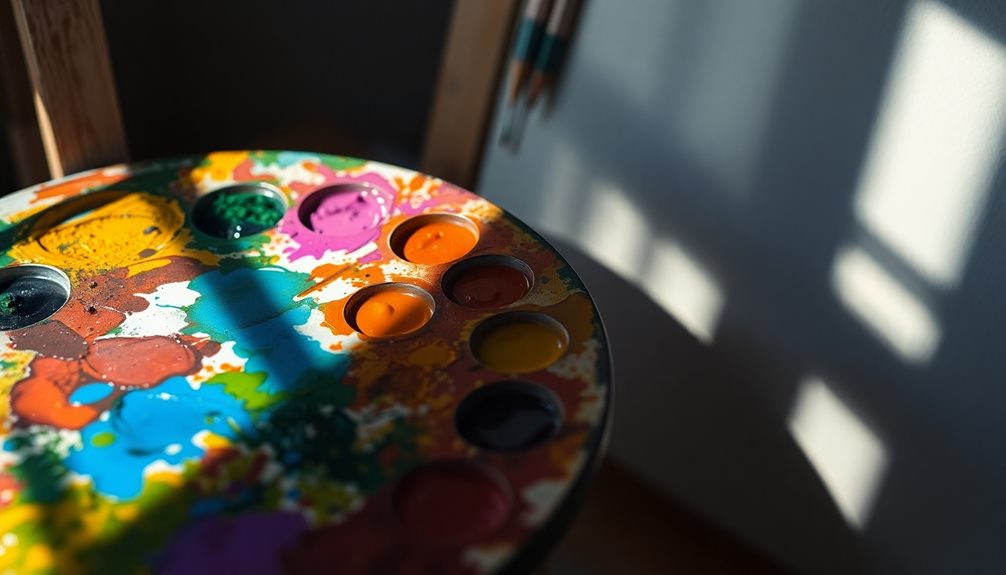
In the world of art, light and shadow play crucial roles in shaping your perception of form and space. By understanding how light interacts with objects, you can create compelling compositions that feel three-dimensional, even on a flat canvas. The interplay of light and shade helps define form shadows, adding depth and realism to your work.
Just as music can evoke emotions through nuanced interpretations, the use of light in art can create an immersive experience for the viewer, akin to the emotional connections found in Lost Balloons.
It's essential to recognize that the angle, intensity, and quality of light significantly affect the appearance of shadows. Each light source you use will influence the shape and sharpness of the shadows, altering the mood of your artwork. Mastering light logic is vital for capturing the essence of your subjects accurately.
Historical techniques like chiaroscuro and tenebrism highlight how artists have used light and shadow to evoke emotion and narrative. These methods demonstrate the power of observational skills in studying how light interacts with forms and colors.
As you develop your artistic practice, honing these skills will enhance your ability to depict realistic light and shadow, ultimately elevating the overall impact of your art. Embrace the dynamic relationship between light and shadow, and watch your creations come to life.
Key Concepts and Definitions

Understanding key concepts and definitions surrounding light and shadow will enhance your ability to create depth in your artwork. Light and shadow are fundamental elements that give your pieces a three-dimensional quality. When you apply light, it defines the form through highlights, while shadows delineate depth.
In the same way that high contrast ratios yield deeper blacks and brighter whites in projectors, mastering light and shadow can enhance the perception of depth in your art essential for detailed image rendering.
A cast shadow occurs when an object blocks a light source, creating a shadow on a surface. In contrast, a form shadow appears on the object itself, illustrating the areas turning away from the light.
Shadows consist of several components: the shadow core, which is the darkest part; form shadows, which represent areas in full shadow; and occlusion shadows, the darkest regions where light is entirely blocked.
The characteristics of shadows, like sharpness or softness, depend on the light's distance and size. Nearby light creates sharper shadows, while distant light produces softer edges.
Additionally, understanding ambient light and its interplay with light direction, intensity, and color temperature is crucial for accurately depicting shadows. Mastering these concepts will significantly improve the realism of your artwork.
Light Source Interaction Techniques
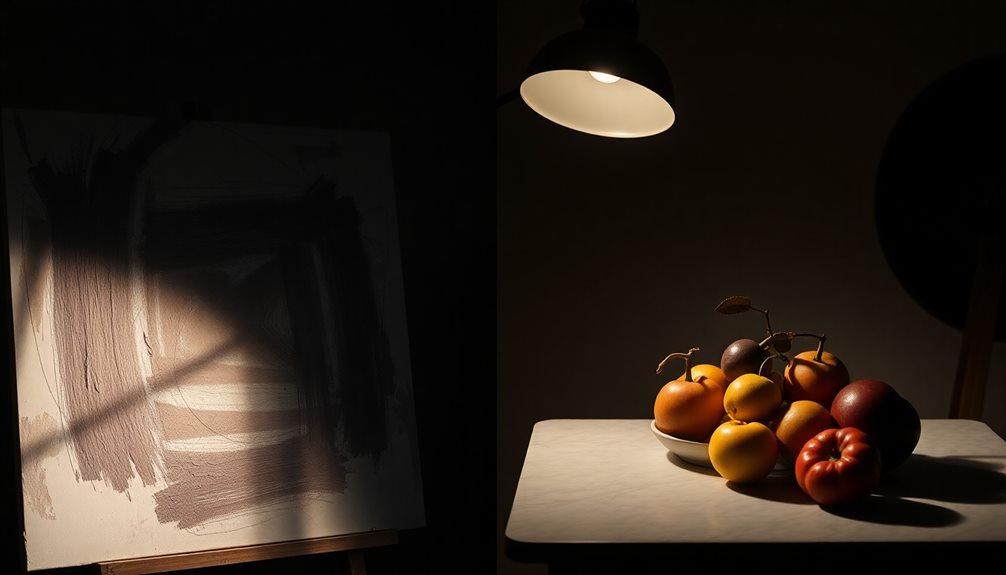
Light source interaction techniques play a crucial role in shaping the mood and depth of your artwork. By understanding how different light effects work, you can create a more engaging visual narrative.
Start with your key light, which establishes the overall atmosphere and form of your subject. Use fill light to gently illuminate shadow in art, revealing details that might otherwise remain hidden. Additionally, consider the role of budget planning in managing your art supplies and resources effectively, ensuring you can experiment with various lighting techniques without overspending.
When you incorporate multiple light sources, pay attention to how they overlap. Different intensities and angles can lead to complex shadows and highlights, enhancing the three-dimensionality of your piece. For instance, rim light positioned behind your subject creates a striking highlight that emphasizes shape and depth, giving life to your work.
The size and distance of your light sources also influence the softness of the shadows. Larger sources produce soft light, casting gentle shadows, while closer sources yield sharper, more defined shadows.
Core shadow plays a vital role here, as it defines the form and adds dimension. Experimenting with these techniques will help you master the art of light and shadow, transforming your creations into compelling visual experiences.
Still Life Light Experiment
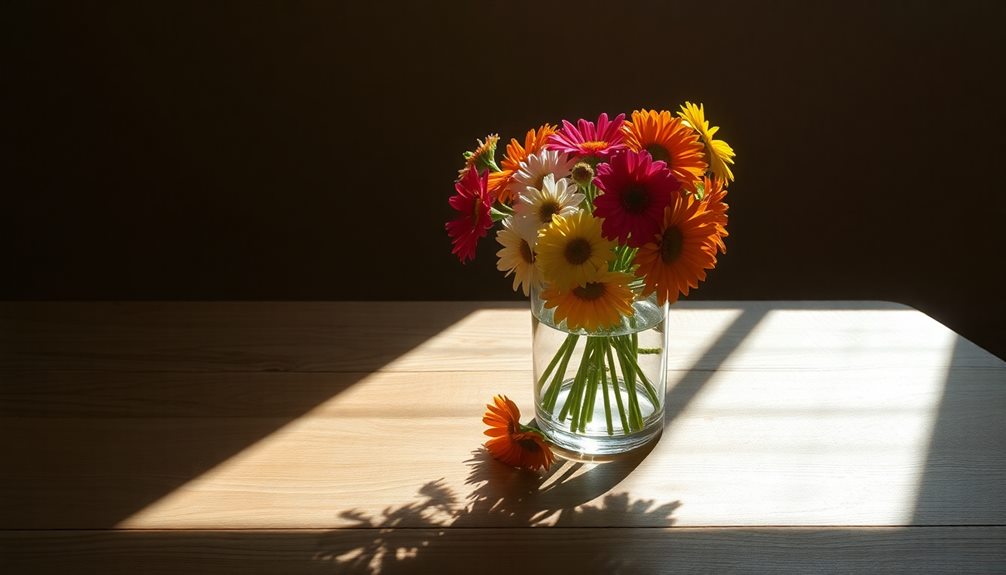
Exploring the nuances of light in still life settings can significantly enhance your artistic skills. Start by positioning a single light source at various angles. Notice how this affects the shape and intensity of shadows cast by your objects. Pay particular attention to the darkest part of the shadows; this will guide your understanding of depth and form.
Next, experiment with different surfaces beneath your still life arrangement. The texture and color of the surface can dramatically influence the appearance of shadows and reflected light. You might also incorporate colored gels or filters over your light source. This allows you to observe how varying light temperatures can alter the perceived color of shadows, revealing the intricate interplay between light and material.
Don't forget to document the effects of light distance. Move the light source closer or further from your objects and note how this impacts shadow sharpness and clarity.
Tips and Best Practices

When you start drawing, using a single light source is key to simplifying shadow shapes and enhancing depth in your artwork. This approach allows you to clearly define the three areas of form: the light side, shadow side, and cast shadow.
Observe how light hitting your subject affects these areas. For instance, hard light creates distinct edges, while soft light results in blurred edges, giving you insight into how to render shadows effectively.
In your painting lessons, don't shy away from experimenting with color in shadows. Remember, shadows can alter the perceived saturation and value of colors, so practice depicting this variability for more realistic representations.
Continuously observe natural lighting conditions and sketch under different scenarios to deepen your understanding of how light behaves on forms. This practice will help you create more three-dimensional effects in your work.
Pay attention to angles and distances of your light source, as they directly influence shadow shapes. By mastering these techniques, you'll enhance not just the clarity and depth of your drawings, but also your overall artistic skill.
Keep experimenting, and watch your art come to life!
Viewer Engagement and Feedback

Engaging viewers in discussions about light and shadow can open up new avenues for artistic growth and understanding. When you explore how these elements create emotional responses, you'll notice the interplay can evoke feelings of depth and drama in your work. Feedback from your audience often highlights the effectiveness of light direction and shadow play, revealing how these aspects can enhance or detract from your piece's impact.
As you interact with viewers, consider their perceptions of warm and cool tones and how these colors influence their emotional reactions. For instance, when they discuss different light scenarios or interesting shadow patterns, you glean insights into the psychological associations tied to brightness and darkness.
Understanding that individuals may react differently to shadow color and intensity can refine your grasp of light dynamics. Encouraging this engagement not only fosters a deeper appreciation for the technical skills involved but also allows you to adjust your approach.
Light Intensity Variations
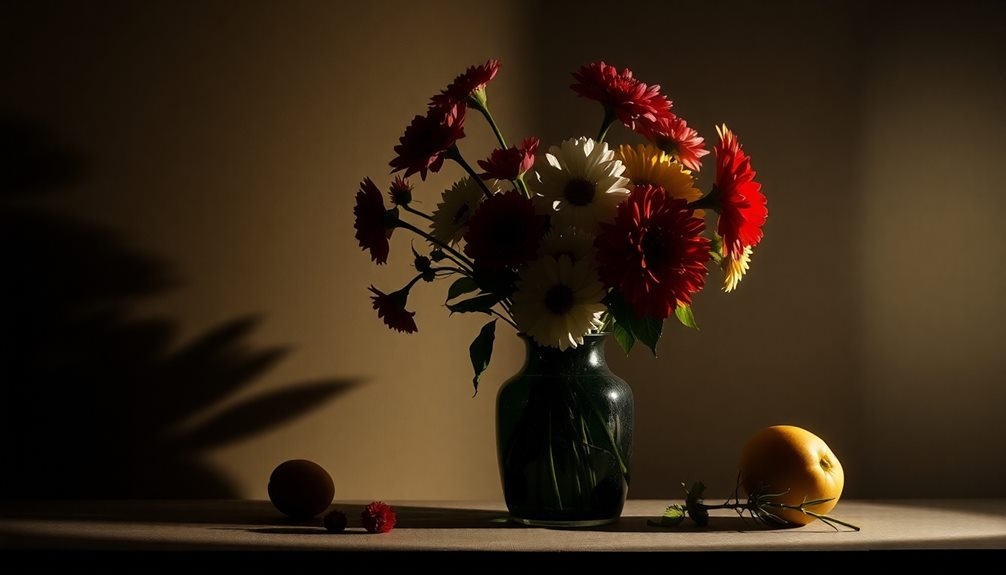
Light intensity variations play a crucial role in shaping the visual narrative of your artwork. When you use hard light, you create well-defined edges in your shadows, giving your piece a stark, dramatic effect. Conversely, soft light blurs these boundaries, resulting in a gentler, more diffuse appearance.
The distance of your light source also matters; a closer light will produce shorter, sharper shadows, while a distant source yields longer, softer shadows that can enhance the sense of depth.
Understanding how variations in light intensity affect your work can significantly alter the perceived depth and dimension of your forms. Bright white light can reveal intricate details within your shadows, expanding the tonal range and adding complexity.
In contrast, lower intensity light often leads to more mid-tones, creating a subtler interplay of light and shadow.
Additional Resources
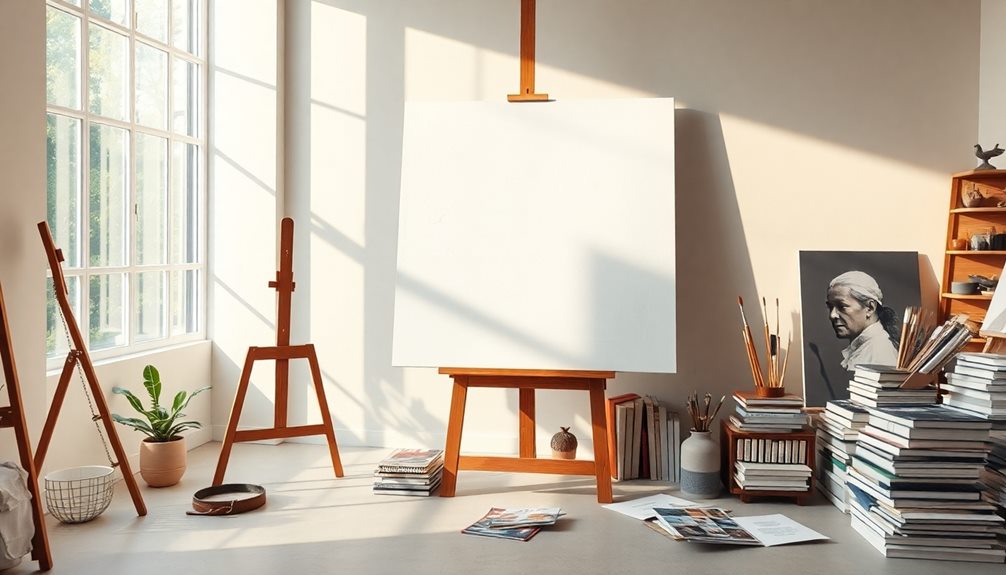
For artists looking to deepen their understanding of light and shadow, a wealth of additional resources is available. You'll find free online minilessons tailored for all skill levels, covering everything from basic drawing techniques to advanced painting methods. These resources make learning both accessible and convenient.
Many tutorials feature insights from experienced artists like Brad Teare and Daniel Edmondson, who share their knowledge about shadow colors and light interactions in art. You'll need to know how to utilize these insights effectively.
Don't hesitate to experiment with colored lights as a practical approach to enhance your grasp of light and shadow dynamics.
Engaging with the community through forums and workshops can greatly enhance your learning experience. These platforms foster deeper comprehension and provide support for specific challenges you might face while painting with light and shadow.
Frequently Asked Questions
What Does Light and Shadow Mean in Art?
In art, light and shadow create depth and dimension, helping you perceive forms realistically. They guide your eye, evoke emotions, and define space, adding richness and narrative to the artwork you explore.
What Is the Concept of Light and Shadow?
The concept of light and shadow refers to how light reveals and obscures forms. You see how light interacts with objects, creating depth and dimension, while shadows add contrast, enhancing the overall perception of space.
What Is the Light and Shadow Method of Painting?
The light and shadow method of painting helps you create depth by emphasizing a single light source. You'll analyze light and shadow areas to render realistic forms, enhancing your artwork's emotional impact and dimensionality.
What Are the Principles of Light and Shadow?
You need to understand how light interacts with objects. Consider angle, intensity, and distance. Recognizing highlights, shadows, and cast shadows helps you create depth and form in your work, making your subjects more dynamic and realistic.
Conclusion
In conclusion, mastering light and shadow is essential for enhancing your artwork. By understanding the key concepts and experimenting with different techniques, you'll bring depth and life to your pieces. Remember to engage with your viewers and seek feedback to refine your skills. Don't hesitate to explore various resources to expand your knowledge further. Embrace the interplay of light and shadow, and watch your artistic expression flourish!









